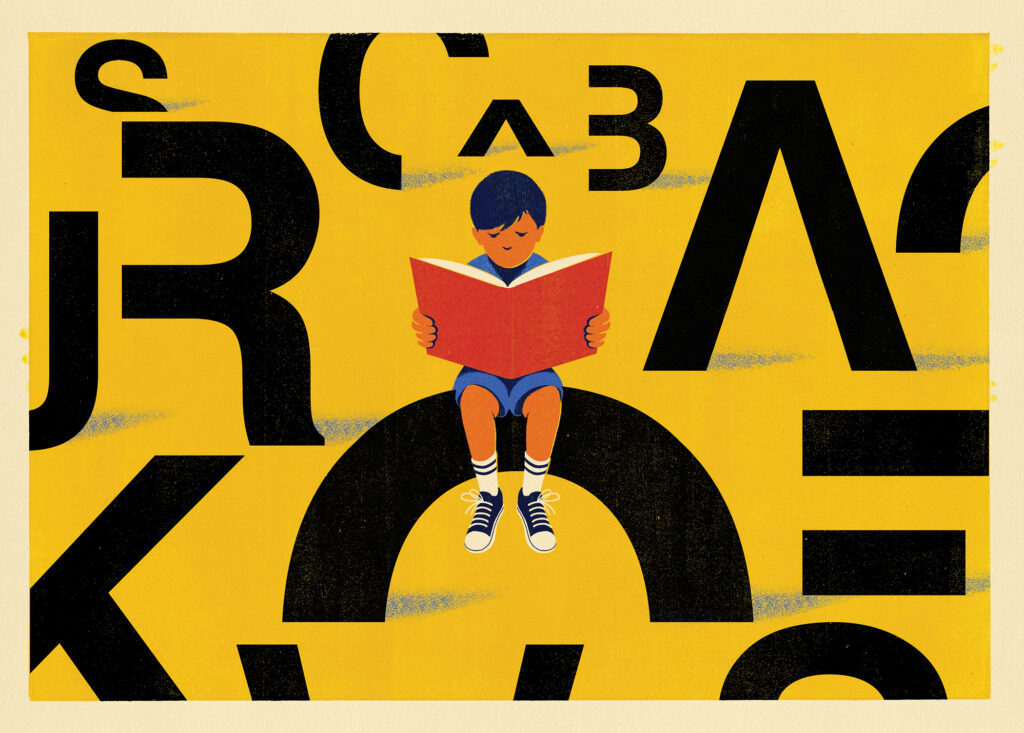Reading Is a Gift
In Support of FDU’s Center for Dyslexia Studies

(Illustration: Daniel Bejar)
By Anne Sherber
“I can take a child who hasn’t had success in school and, using Orton-Gillingham, teach that child to read,” says Ann Marie Schwartz, who was certified in the Orton-Gillingham approach — a multisensory phonics technique used to teach literacy — by FDU’s Center for Dyslexia Studies in 2000. Individuals with dyslexia typically have trouble reading in a traditional manner and struggle with understanding and comprehending words and passages — it’s a common learning disability, affecting an estimated 40 million Americans.
Schwartz, who began her career as an elementary school teacher, says that she has been able to help many children in the 22 years since she was trained in the method, and that she is passionate about spreading the word. “Children with learning disabilities are often placed in special-education classes even though many are exceptionally bright,” she says. “There should be someone in every school who has this training and can identify and help children with dyslexia.”
To that end, Schwartz and her family’s foundation have made FDU’s Center for Dyslexia Studies a philanthropic priority. “When you see parents angry, sad and agitated because their kids are struggling, and then you see the effect on the whole family as soon as their kids stop having trouble and become successful, that’s very rewarding,” she says.
The impact of training even one teacher in this method can have a profound effect.
“Gifts to the center provide scholarships for teachers to learn how to teach reading to struggling readers,” says Mary Farrell, director of the Center for Dyslexia Studies. “It is a gift that keeps on giving. We estimate that, on average, our graduates teach 15 struggling readers each year throughout the course of their typically lengthy teaching careers. The impact of learning to read for a struggling reader is immeasurable in terms of its long-term outcomes for improved self-esteem, attitude and life expectancy.”